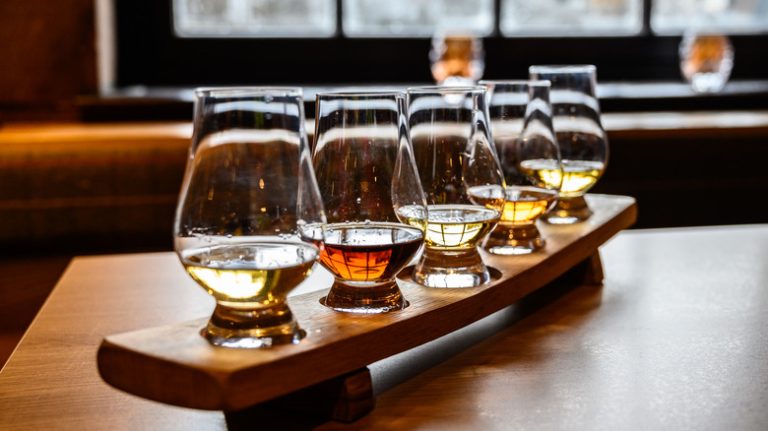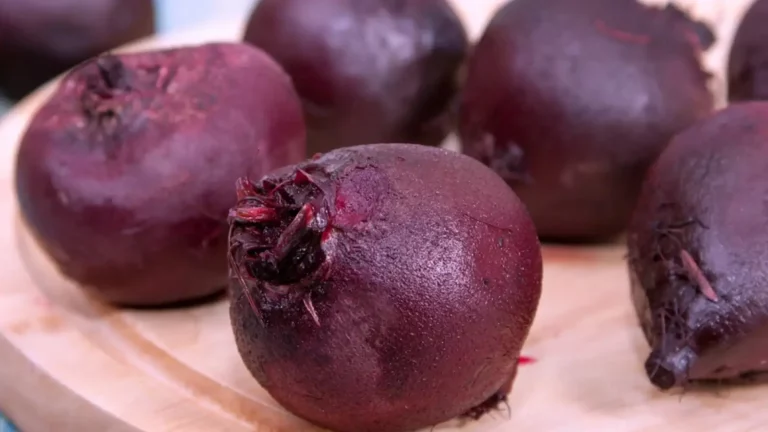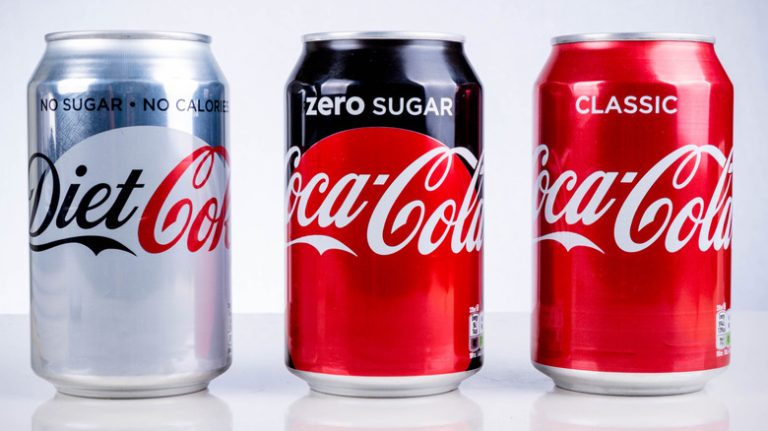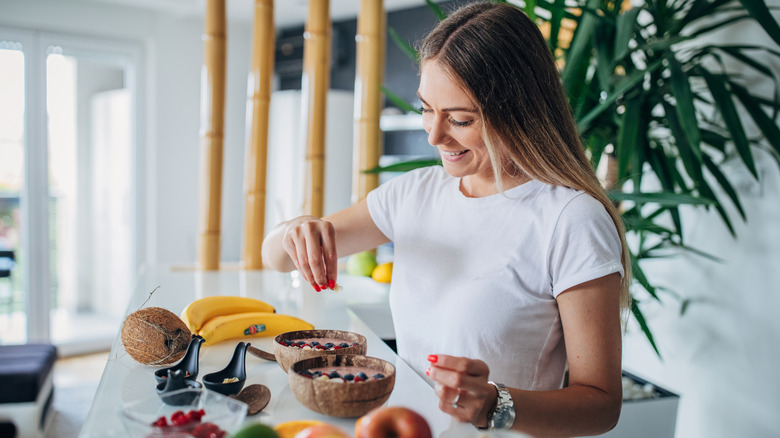
Legendary Elvis Presley knew the ideal mix of sweet and salty was peanut butter and banana. His favorite sandwich incorporated these two delights between two grilled and buttered slices of bread. When you think about it, a peanut butter and banana sandwich is a great combination, especially if you use healthy whole-grain bread. Peanuts provide healthy fats and protein to keep you feeling satisfied, while bananas offer fiber and carbs for energy. This simple snack includes all three macronutrients: carbohydrates, fats, and proteins.
Athletes often express their fondness for bananas and peanut butter before workouts. Olympic gymnast Simone Biles shared with Women’s Health that she enjoys peanut butter and banana before her training. Ironman World Champion Chrissie Wellington began each race with peanut butter, banana, honey, and cream of rice. Even if you’re not a professional athlete, a banana and peanut butter combination provides essential nutrients that can energize your workouts and support overall health.
Nutrients in Peanut Butter and Banana That Can Fuel Your Workouts
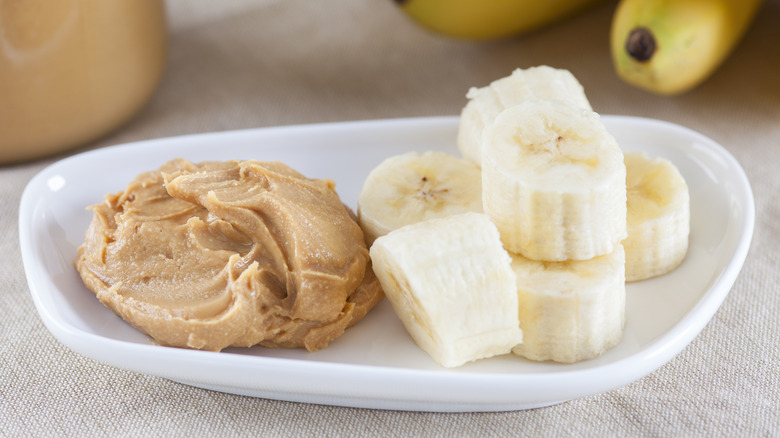
A medium banana and two tablespoons of peanut butter together contain 611 milligrams of potassium, an excellent electrolyte that helps prevent cramping during intense workouts. This combination is also relatively low in sodium, with just 153 milligrams, and you likely already consume enough sodium in your diet. Together, peanut butter and banana provide 89 milligrams of magnesium, another important electrolyte for athletes to maintain fluid balance and support muscle contractions.
Active athletes require vitamin B6 to break down protein for muscle and tissue repair. Consuming banana and peanut butter together meets one-third of your daily recommended intake of vitamin B6. You’ll also receive 31% of your daily niacin, which aids in metabolizing food into energy. Amino acids like arginine are vital for athletes. A 2017 study in the European Journal of Clinical Nutrition found that athletes who supplemented their diets with 2 grams of L-arginine per day for 45 days experienced improved VO2 max, a key measure of sports performance. Peanut butter and banana combined offer 933 milligrams of arginine.
Peanut Butter and Banana for Overall Health
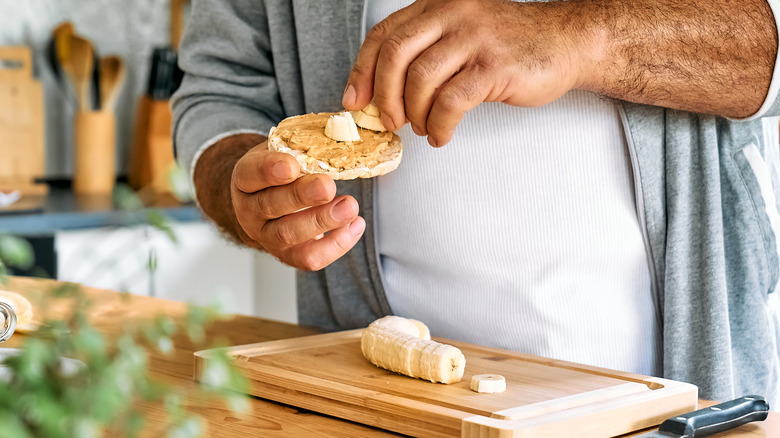
Snack on a banana alone might not be very filling, but adding some peanut butter provides enough protein and healthy fats to keep you satisfied for hours. Don’t worry too much about the fat content in peanut butter, as less than 20% is from saturated fat. Six grams of fat in peanut butter come from oleic acid, an omega-9 fatty acid that can reduce inflammation and lower cholesterol.
Without the banana, you’d miss out on the antioxidant vitamin C if you just consumed peanut butter. A banana lacks vitamin E, but peanut butter is a good source of this antioxidant. The combination also provides almost 5 grams of fiber. Be sure to choose an all-natural peanut butter containing only peanuts and salt to avoid excess sugars or additives.
Peanut butter with banana might be tricky to eat unless you slice the banana and place it atop the peanut butter on toast. However, one way to enjoy this combination without bread is to freeze bananas just after their peak ripeness, enhancing their sweetness. When ready to eat, microwave the banana for 30 seconds or less, add a tablespoon of peanut butter, and stir.


